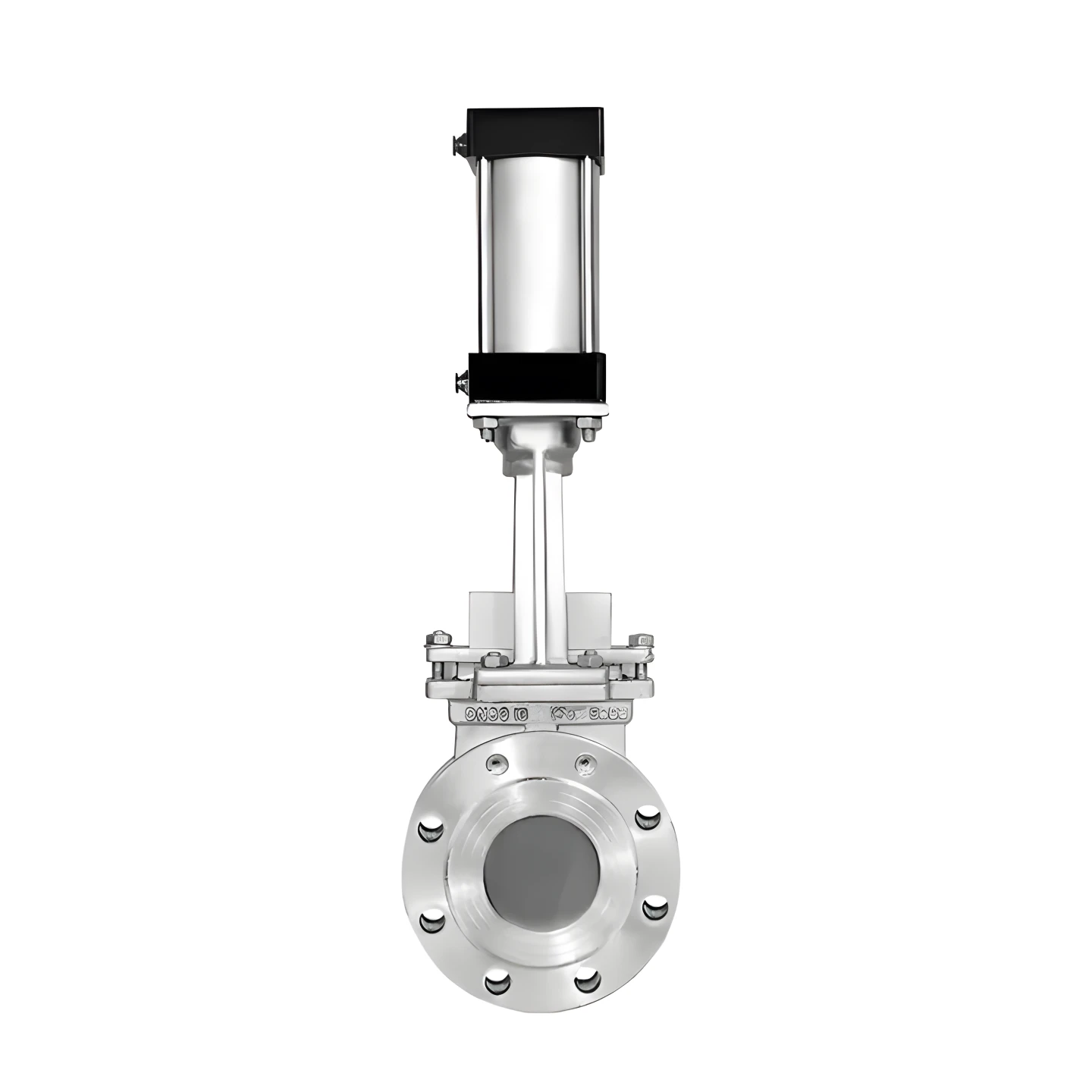| Application | General | Place of Origin | Shenzhen, China |
|---|---|---|---|
| Power | Pneumatic | Customized support | OEM, ODM |
| Warranty | 3 years | Model Number | DN40-DN500 |
| Temperature of Media | Normal Temperature | Brand Name | ICV VALVE |
| Size | DN40-500 | Color | Pic Color |
| Product name | Knife Gate Valve |
1. Introduction
The 4-inch pneumatic soft seal cast iron knife gate valve, commonly referred to as a mud knife gate valve, is specifically designed for handling slurry and highly viscous media. Its robust construction and reliable sealing mechanism make it an ideal choice for industries such as mining, wastewater treatment, and pulp & paper.
2. Features
- Material: High-quality cast iron body with a soft seal for enhanced sealing performance.
- Actuation: Pneumatic actuator for efficient and remote control operation.
- Design: Knife gate design to cut through thick media, ensuring smooth flow and minimal clogging.
- Seal: Soft seal ensures tight closure, preventing leakage.
- Operation: Suitable for both on-off and throttling applications.
3. Applications
- Mining industry for slurry and tailings.
- Wastewater treatment plants.
- Pulp and paper industry.
- Chemical processing.
- Food and beverage industry.
4. Technical Specifications
| Parameter | Specification |
|---|---|
| Valve Size | 4 inches (DN100) |
| Body Material | Cast Iron |
| Seal Material | Soft Seal (EPDM, NBR, or PTFE) |
| Actuator Type | Pneumatic |
| Pressure Rating | PN10/PN16 |
| Temperature Range | -10°C to 80°C (14°F to 176°F) |
| Connection Type | Flanged |
| Face-to-Face Dimension | According to ISO 5752 |
| Media | Slurries, viscous fluids, etc. |
| Operating Pressure | 0.6 MPa - 1.6 MPa |
| Actuation Pressure | 0.4 MPa - 0.7 MPa |
| Stroke Time | 2-5 seconds |
| End Connections | ANSI B16.5, DIN, JIS |
| Leakage Rate | Zero leakage (soft seal) |
| Testing Standard | API 598 |
5. Installation Instructions
- Preparation: Ensure the pipeline is clean and free of debris.
- Alignment: Align the valve with the pipeline flanges.
- Bolting: Secure the valve using appropriate bolts and nuts, ensuring even tightening.
- Actuator Connection: Connect the pneumatic actuator to the air supply as per the manufacturer's instructions.
- Testing: Test the valve for proper operation and check for leaks.
6. Maintenance
- Regular Inspection: Periodically inspect the valve for signs of wear or damage.
- Seal Replacement: Replace the soft seal if leakage is detected.
- Actuator Maintenance: Follow the actuator manufacturer's maintenance guidelines.
7. Safety Precautions
- Ensure the air supply is disconnected before performing any maintenance.
- Use appropriate personal protective equipment (PPE) when handling the valve.
- Follow all relevant safety standards and guidelines.
8. Troubleshooting
| Issue | Possible Cause | Solution |
|---|---|---|
| Valve does not open/close | Insufficient air supply | Check air pressure and connections |
| Leakage through the seal | Worn or damaged seal | Replace the soft seal |
| Actuator malfunction | Actuator failure | Inspect and repair/replace actuator |
Product Showcase














